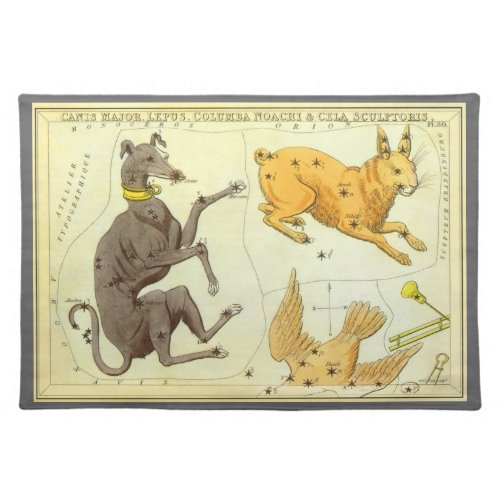Best Price! Urania's Mirror, Vintage Astronomy Celestial Map Cloth Placemat
- jessiga
- Feb 10
- 2 min read
Urania's Mirror, Vintage Astronomy Celestial Map Cloth Placemat
Best Price! Urania's Mirror, Vintage Astronomy Celestial Map Cloth Placemat - Placemats ready to ship the fastest quality products and have the highest number of reviews in the same categoryVintage illustration astronomy and antique celestial star chart featuring four constellations, Canis Major, Lepus, Columba Noachi and Cela Sculptoris. Canis Major (Latin for greater dog) is a constellation, included in the 2nd century astronomer Ptolemy's 48 constellations, and still included among the 88 modern constellations. It is commonly represented as one of the dogs following Orion the hunter. Canis Major contains Sirius, the brightest star in the night sky, known as the 'dog star'; that star is part of the asterism known as the Winter Triangle in the Northern Hemisphere, or the Summer Triangle in the Southern Hemisphere. Lepus (Latin for hare or rabbit) is a constellation lying just south of the celestial equator. Lepus was one of the 48 constellations listed by the 2nd century astronomer Ptolemy, and it remains one of the 88 modern constellations. It is located below the constellation Orion (the hunter), and is sometimes represented as a rabbit being chased by Orion. Columba (Latin for dove, bird) is a small, faint constellation created in the late sixteenth century. It is located just south of Canis Major and Lepus. Plancius originally named the constellation Columba Noachi ("Noah's Dove"), referring to the dove that gave Noah the information that the Great Flood was receding. Caelum (Latin for the chisel) is a faint constellation in the southern sky, introduced in the eighteenth century by Nicolas Louis de Lacaille. It was formerly known as Cæla Sculptoris, "the sculptor's chisel". It is the eighth smallest constellation, with an area just less than that of Corona Australis. Price:$16.50




Comments